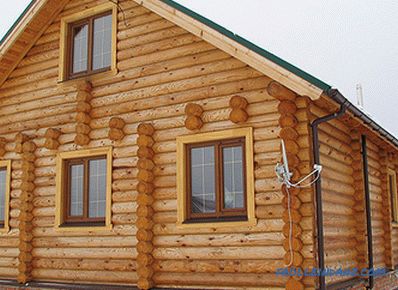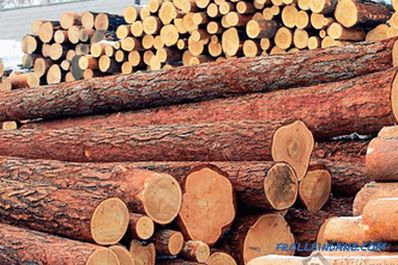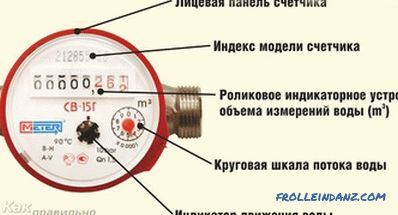Polypropylene pipes are increasingly being used to mount heating and water supply systems - regardless of whether a new pipeline is being laid in your house, or the old system for supplying heat (water) is being repaired. To perform high-quality installation of the pipe from propylene pipes it is not necessary to be a qualified plumber. But the search for the most appropriate and reliable method of soldering, in this case will be relevant. We suggest right now to consider how to solder polypropylene pipes for heating with your own hands, as well as to visually see the video and photo instructions.
Tools
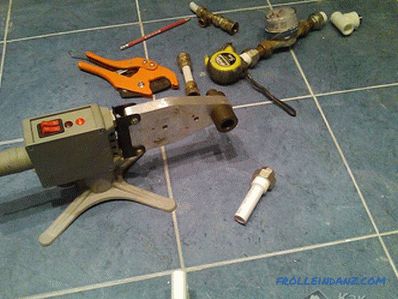 Soldering Tools
Soldering Tools
- Soldering Iron ( apparatus) for polypropylene pipes. The most important tool, but it is not necessary to buy it for one-time work in an apartment, you can just rent it. But for the owner of a country house, and even with additional heated buildings on the site, such a device must be constantly.
- Teflon nozzles for soldering iron. Their diameter is up to 40 mm. The choice of diameter depends on the specific design features of the installed water supply system. With the help of nozzles, the external and internal parts of the parts to be joined (tee, coupling or angle) are simultaneously melted, which will then be joined and fused together.
- means for pipe degreasing;
- cutter used for cutting polyethylene pipes;
- ruler;
- square;
- tape measure ;
- pencil (felt-tip pen);
- files;
- knife;
- rags.
Types of connection
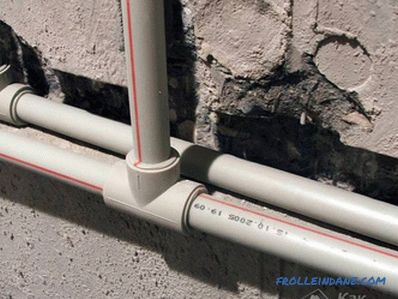 Types of connection of pipes
Types of connection of pipes
Basic types of connection polypropylene pipes:
- butt - for soldering pipes with a diameter greater than 63 mm.
- bell-shaped (socket) - for connecting pipes with a diameter of less than 63 mm.
Spray soldering is used for the installation of water pipes in private homes or baths, since there is no need to install pipes with a diameter greater than 50 mm. Polypropylene pipes with a diameter of 40 (50) mm are well suited for trunk lines. For branch pipelines, for example, to connect the sink to the mixer, the ideal pipe would be from 16 to 32 mm in diameter.
Connection methods
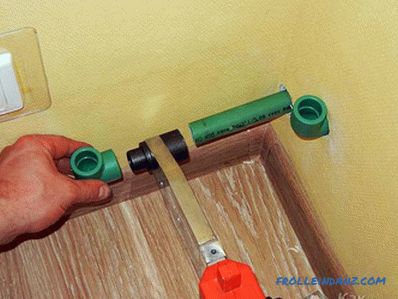
- Pipe soldering. Pipes with a diameter of ≤ 40 mm are soldered with the help of an electric welding machine having appropriate nozzles. Soldering pipes with a diameter of ≥ 40 mm requires a special apparatus with centering tools.
- Butt Welding. This type of soldering is applicable in cases when it is required to butt-weld to connect pipes with a diameter ≥ 50 mm and a wall ≥ 4 mm. In the construction of individual cottages butt welding is rarely used.
- Soldering saddles. It is a type of butt welding. In this case, a special seat with a socket at an angle of 90 ° is soldered to the cylindrical surface of the pipe. After a slight holding of the welded assembly, a hole is drilled in the pipe through the saddle. After that, another pipe is soldered to the saddle and as a result you will have some welded connected construction resembling the letter "T".
Soldering technology
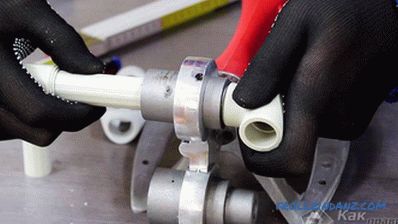 Technology of soldering pipes
Technology of soldering pipes
During soldering All your actions should be fast, clear and without fuss. If you have never soldered polypropylene pipes, then you are advised to try several test connections. As soon as you feel confident in independent actions, you can safely proceed to the welding of pipes.
Rules :
- At the very beginning, the socket of the fitting is inserted into the nozzle, and then the pipe. After these actions it is necessary to make the required time delay.
- The very first connection needs to be checked for welding quality. If you see that the hole is blocked by the deposited mass of polypropylene, this means that the depth of the inserted part of the pipe should be reduced by a couple of millimeters.
- Larger pipes require more time to heat them.
- The pipe and connector must not be overheated.
Soldering process:
 Pipe Installation
Pipe Installation
- From the edge of the propylene pipe with a pencil (felt-tip pen) it is necessary to mark the length of the melted part (the point to which the pipe will be inserted into the nozzle).
- If you need to weld one more fitting on the other end of the pipe, which will change the direction of the connection (corner or tee), then on the pipe you need to note again the location on the auxiliary rib fitting. If it is missing, marks are applied to the pipe and fitting.These tags will serve as indications of the exact location of the fitting when connected — relative to the longitudinal axis of the pipe and relative to its rotation by the desired amount (for example, so that the sockets of both fittings lie in the same plane or are positioned at an angle of 90 to each other).
- Next, a fitting socket, a pipe and the necessary shutter speed are introduced into the heated nozzle first. Both parts are smoothly pulled out, quickly connected, combined with previously marked marks, angles are regulated. All these actions are very important to perform quickly and accurately during the allotted time limit.
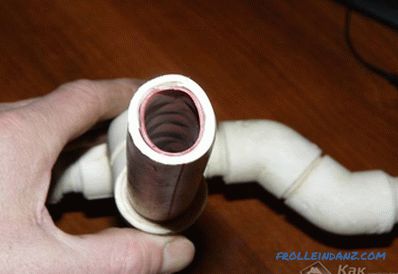 Connection with fitting
Connection with fitting
- The elements to be connected must be fixed at 25- 30 seconds - after this time has elapsed, the welded unit will take its final position (polypropylene hardens).
No rotation around the axis of the connected elements. It is necessary to hold the polypropylene elements tightly enough to avoid accidental movement of the pipe in the connector. Even a small awkward movement can be a prerequisite for the flow of welded pipes. It is necessary to maintain the welded assembly in natural conditions until the material is completely cured. Another type of cooling, for example, water or ice - is unacceptable.
- If a defect is detected in your work (for example, a curvature), then the defective fragment is cut out and a new node is installed in its place (a coupling can be used).
- The presence of a neatly melted ring around the pipe and the end of the fitting indicates that the soldering was done correctly.
- At the end of the soldering process, it is necessary to wipe the nozzles in a heated state with a cloth, removing contaminants, fusing and burns.
As you can see, there is no particularly difficult polypropylene in welding. You only need to practice a little. But for the accumulation of experience and acquisition of skills, you will have to sacrifice small fragments of the pipe and your time.
Video
The following video provides instructions on the soldering of plastic pipes for beginning masters:
Here is the process of soldering pipes using a special soldering iron:


